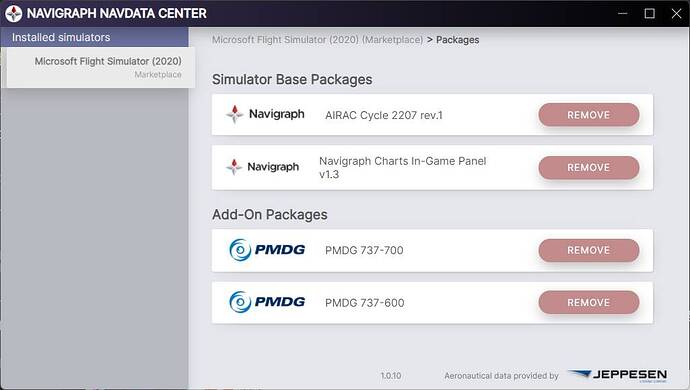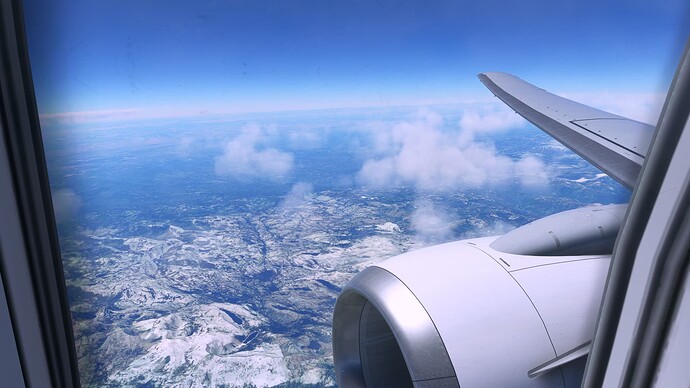Cockpit diagram would be great help indeed. Perhaps someone familiar with the knowledge could do such?
Interesting. Well, like I said, autobrake 1 is when you see the red light from 300m and you start braking slowly (mostly for the car behind you to see your brake lights). As you can see in the performance calculation I posted, if max manual braking (the highest possible deceleration in the 737) will stop you in 1300m, autobrake 1 will stop you in 3200m. That’s 2Km more (1.2 miles)!!
If you want to know what the autobrake is doing you can change the AB setting during the landing roll. Just turn the knob while the airplane is slowing down and watch the green speed trend vector change as braking increases/decreases.
I never thought I’d be this fascinated by the braking techniques on 737s… ![]()
So is the decision whether or not to use the reversers on landing always a pilot-in-command decision based on the runway length/planned runway exit/ambient temperature and experience, or are there corporate rules regarding when and how to use them? Or both? I didn’t even know it was optional, to be honest… I’ve been jamming on max reverse all the time, and only reading these posts did I realize I could just leave it on auto-2 for almost every situation and have plenty of room for rollout…
LOWI, LDSP 23, LOWS 33, LFMN 22, LFKJ 20, LDDU, LYTV, LIRN 06, LGKR, LGSK, LSZS, LSZA, LIMW, LSGS, LSGG, LXGB, LPMA 05, GCXO.
Have fun ![]()
Yes, ultimately it’s the PIC who makes the final decision.
Each company will have their own policy and guidance, such as “idle reverse unless the landing performance accessment indicates brake temps above 4 units (777 uses a generic unit rather than actual temp), or as necessary for the environmental conditions.” Even with these SOPs, the PIC has the freedom to use whatever reverse they like, based on the operational needs at the time.
Also note, many airports try to limit the use of more than idle reveres, for noise abatement purposes. However, again, the PIC always the the authority to deviate from this if they deem it necessary.
You known that feeling when you are nervous, first time on something be it car, truck, train and in this case, new aircraft type or doing something newb like VOR… everything seems to happen in super fast motion…
It’s only now that the 737 seems to have slown down enough for me to try stuff while in take-off and landing so I’ll definitely have a little play with the auto-brake during my next landing role in the 737.
Do you have a key binding for the auto-brake and if so, what key/joystick button do you use
I think i’m having problems/misunderstanding with how the fixed configuration works. Everytime i set a fixed configuration and then acquire a new livery from FSTO and load it in (after exiting the sim of course!), that fixed configuration i had does NOT apply to it so i have to set everything up again.
Which leads me to ask: What’s the point of a fixed configuration if things will change every time i load in a new livery/Reg number??
Also, let’s say i tweaked the aircraft configuration of that newly downloaded livery to my liking, will i save the settings over to next time i load it in?
That’s one thing that still confuses me ever since i started flying the 737…
I don’t have an assignment for the autobrake. I set it before starting descent and leave it there until taxi speed is assured. I disarm it by flicking the brakes or stowing the speedbrakes like in the real airplane.
The configuration options are per airframe. New livery/tail number, new setup. Once configured reloading that airframes saved config should be preserved.
Duh, I was just thinking about that after I wrote the post. Makes sense. Thanks!
Anyone noticed that the windows in the included fixed camera views are blurred and so the image looks very blurred through them?
In normal standard procedures, are the air conditioning packs shut off during start or not in an Airbus and Boeing?
I have never done this - and never had any problems. But in some real pilot YouTube videos it is said that the packs are shut off during start.
I mean compared to the front window. For me I clearly see the cabin windows blur the image too much
The main fight deck windows are cleaned often, and aside from the side windows, they’re fairly far away from mouth-breathing human beings. Cabin windows aren’t cleaned as often or as thoroughly, and almost always have a plastic scratch pane on the inside in addition to the pressure pane. In addition to getting dirty, they get scratched over time. And since they’re not pressure-tight, the scratch panes can get slightly fogged or dirty on the outer surface, facing the inside of the pressure pane where they can’t get cleaned at all without disassembling cabin interior panels.
Yes, packs must be off for engine start on the 737 (all of them). It won’t reach 25%N2 (hardly 20%) with packs on, so in real life you won’t be able to start the engines, and even if you try it would be very likely to have a hung start/hot start.
Once one engine is started you can use “isolated pack procedure” from the supplementary procedures to allow one pack to be supplied by the engine bleed of the started engine 2 and the apu bleed to supply the starter for engine 1. Especially in summer it helps to keep the cabin nice and cool.
I’m pretty sure that I saw someone post recently, that the Airbus packs are turned off automatically when the knob beneath the engine start levers is turned to the ign/start position, hence the need to turn it back to the mode/norm position again once both engines are started.
Yes, that’s true. On the A320, once the start knob is changed to IGN/START, the packs automatically turn off and the engine will start once the fuel lever is moved to the on position. I believe once both engines are started, the packs will come back on even if the start knob is still set on IGN.
This is a bit opposite of the 737, where you have to turn off the packs manually, turn the ignition to GND, and introduce fuel once at 25% N2. The A320 is a bit more automated than the 737 in that regard.
Aviaworx just posted an update to their software to accommodate the -600 for those of you who are interested.

